Ashwagandha and Stress Reduction: A Path to Self-Reflection
🌞 Introduction: When Stillness Feels Out of Reach
In the modern world, stillness has become a luxury.
You wake up to notifications, multitask through meals, and lie in bed replaying the day. Even rest feels rushed.
Stress doesn’t just tighten muscles — it narrows perception.
You lose touch with body signals, emotions blur together, and reflection turns into rumination.
To rediscover calm awareness, you don’t need to escape your life — you need to rebalance your biology so your mind can slow down enough to listen.
That’s where Ashwagandha (Withania somnifera), one of Ayurveda’s most celebrated adaptogens, becomes an ally.
Known as “Indian ginseng” and literally translating to “the smell of a horse” (symbolizing vitality and resilience), Ashwagandha is not merely a stress reliever.
It’s a nervous-system teacher, showing your body how to restore balance, and your mind how to reflect instead of react.
This article explores how Ashwagandha quiets the stress response, promotes inner stability, and creates the biochemical conditions for genuine self-reflection — the kind that heals rather than overwhelms.
Looking for supplements for Brain Fog? Click here.
🌿 Section 1: Understanding the Stress-Reflection Loop
🔄 The Biology of Disconnection
When stress becomes chronic, cortisol and adrenaline flood your system.
Your brain switches into survival mode — scanning for threat, not truth.
The prefrontal cortex (responsible for self-awareness and insight) dims, while the amygdala (your alarm center) over-fires.
You can’t reflect clearly because your biology thinks reflection is unsafe.
🧘 The Cost of Unprocessed Stress
Emotional reactivity 🌀
Fatigue that sleep doesn’t fix
Racing thoughts
Trouble staying present
Emotional numbness or detachment
Ashwagandha intervenes in this loop — not by numbing you, but by restoring neurochemical safety, so reflection becomes possible again.
⚙️ Section 2: The Adaptogenic Power of Ashwagandha
Adaptogens are herbs that help your body adapt to physical and emotional stressors, restoring equilibrium.
Ashwagandha stands out for its bidirectional intelligence:
It calms when you’re overstimulated and energizes when you’re depleted.
🧩 Active Compounds
| Compound | Function | Benefit |
|---|---|---|
| Withanolides | Regulate cortisol, reduce inflammation | Lower anxiety and tension |
| Alkaloids & Sitoindosides | Support neurotransmitters | Improve mood and resilience |
| Triethylene glycol | Promotes relaxation and sleep | Restores deep rest and recovery |
Together, these compounds rebalance the hypothalamic-pituitary-adrenal (HPA) axis — the body’s central stress circuit.
⚖️ Section 3: How Ashwagandha Calms the Stress System

🧬 Cortisol Regulation
Ashwagandha reduces cortisol levels by up to 30 % in clinical studies.
This re-teaches your body that it’s safe to slow down.
💫 GABA and Serotonin Support
By enhancing GABA (calming neurotransmitter) and serotonin, Ashwagandha promotes relaxation without drowsiness — perfect for reflective work.
🧠 Neuroplastic Protection
Chronic stress shrinks neurons in the hippocampus (the brain’s memory and learning center).
Ashwagandha’s antioxidants protect and even regenerate these cells, strengthening your capacity for insight and perspective.
🌺 Section 4: The Inner Climate of Calm
Once cortisol steadies and the nervous system relaxes, emotional perception changes.
You start noticing nuances again — small joys, subtle irritations, moments of gratitude.
Stress had flattened those details. Calm brings them back.
What You May Notice:
Emotions arise with less intensity and more clarity.
You recognize triggers earlier.
Your body feels safe enough to process feelings instead of suppressing them.
That’s self-reflection — biology cooperating with awareness.
🧘 Section 5: The Three Stages of Calm Awareness
🌿 Stage 1: Regulation
You calm the body through adaptogens, breath, and rest.
🌿 Stage 2: Observation
With the body grounded, the mind starts noticing — thoughts, patterns, sensations.
🌿 Stage 3: Integration
Awareness deepens into insight: you understand why stress arises, not just that it does.
Ashwagandha guides you through all three — biochemically stabilizing stage 1, clearing space for stage 2, and supporting neuroplasticity for stage 3.
🌙 Section 6: Ashwagandha for Modern Stress Types
| Stress Type | Typical Pattern | How Ashwagandha Helps |
|---|---|---|
| The Over-Thinker | Racing mind, tension, shallow sleep | Boosts GABA and serotonin to quiet thoughts |
| The Exhausted Achiever | Burnout, low motivation | Regulates cortisol for steady energy |
| The Anxious Feeler | Sensitivity, overwhelm | Strengthens adrenal resilience |
| The Night Owl | Wired at night, fatigued by day | Supports circadian rhythm and sleep depth |
Ashwagandha adapts to your pattern, not the other way around.
🌬️ Section 7: Breathwork + Ashwagandha for Stress Release
When paired with conscious breathing, Ashwagandha’s effects deepen dramatically.
The herb calms biochemistry; breath anchors awareness.
4-7-8 Breath (Before bed)
Inhale 4 → Hold 7 → Exhale 8.
🌿 Effect: Promotes parasympathetic dominance and restful sleep.
Coherent Breathing (Morning)
Inhale 5 → Exhale 5 for 5 min.
🌿 Effect: Stabilizes heart-rate variability, reduces morning cortisol spikes.
Belly Breathing (During tension)
Hand on abdomen, breathe slowly into lower belly.
🌿 Effect: Relieves body contraction, promotes self-soothing awareness.
Want to try Breathwork? Click Here.
✍️ Section 8: Journaling as Reflection Practice
Stress reduction opens emotional space — journaling fills it with meaning.
Prompts:
“What sensations tell me I’m stressed before my thoughts catch up?”
“What situations drain vs. restore my energy?”
“What did I avoid feeling today?”
“When did I feel most at peace this week?”
Combining Ashwagandha’s calming clarity with these questions transforms journaling into nervous-system dialogue — not self-critique, but curiosity.
💬 Section 9: Therapy and Self-Reflection Synergy

Ashwagandha doesn’t replace therapy; it enhances it by improving emotional tolerance.
When your stress response is less reactive, you can explore painful memories or triggers without flooding.
❤️ Compassion-Focused Therapy (CFT)
Ashwagandha’s soothing chemistry complements CFT’s goal: cultivating warmth and safety within.
🧘 Mindfulness-Based Stress Reduction (MBSR)
Helps maintain mindful focus without fatigue.
💞 Somatic Experiencing
Supports relaxation between sessions and reduces post-therapy exhaustion.
🧩 Acceptance and Commitment Therapy (ACT)
Improves presence during values-based decision-making.
Looking for online therapy ? Click Here.
☀️ Section 10: Morning Grounding with Ashwagandha
A mindful morning routine builds emotional momentum for the day.
Ritual (10 minutes):
Take 300–600 mg Ashwagandha (standardized to 5 % withanolides) with warm water.
Sit quietly, eyes closed, notice your breath.
Mentally scan your body for tension.
Set an intention: “Today I respond, not react.”
You’re not forcing positivity — you’re creating conditions for reflection.
🌇 Section 11: Evening Reflection and Restoration
Evenings are ideal for processing emotions stored during the day.
Ritual (15 minutes):
Brew Ashwagandha tea or take a capsule with warm milk (the Ayurvedic “moon drink”).
Write or think: “What moment asked for more patience or compassion today?”
End with three slow exhales, releasing the day’s residue.
Ashwagandha’s mild sedative effect supports deep sleep, completing the cycle of stress release and insight.
🌿 Section 12: Nutritional Synergy for Calm Awareness
Ashwagandha works best when paired with whole-body nourishment.
Eat More
🥦 Leafy greens – magnesium for relaxation
🥑 Healthy fats – omega-3s for brain stability
🥥 Adaptogenic allies – Rhodiola, Holy Basil, or Maca
🌰 Nuts & seeds – B vitamins for neurotransmitters
Limit
☕ Excess caffeine (spikes cortisol)
🍷 Alcohol (disrupts GABA)
🍩 Refined sugars (mood volatility)
Food isn’t just fuel — it’s communication with your stress system.
🧠 Section 13: Clinical Evidence
Chandrasekhar et al. (2012): 600 mg/day reduced cortisol by 27 % and anxiety by 44 %.
Auddy et al. (2008): Improved resilience to fatigue and concentration in stressed adults.
Langade et al. (2019): Enhanced sleep quality and reduced insomnia.
Lopresti et al. (2019): Balanced thyroid hormones and mood.
Science confirms what Ayurveda has long known: calm biochemistry opens the door to self-awareness.
🌿 Section 14: Energy Balance — Not Sedation
Unlike sedatives, Ashwagandha doesn’t dull consciousness.
It promotes dynamic calm — alert yet relaxed, reflective yet productive.
This is why many creatives, therapists, and athletes use it — not to escape tension, but to refine it into focus.
“Calm isn’t the absence of movement; it’s movement without chaos.”
🌙 Section 15: Safety, Dosage, and Quality
Typical dose: 300–600 mg/day (root extract, ≥ 5 % withanolides).
Take with meals or warm liquids.
Avoid during pregnancy without supervision.
Check for standardized, third-party-tested brands (KSM-66®, Sensoril®).
Cycle periodically (8–12 weeks on, 2 weeks off) for long-term sensitivity.
🌈 Section 16: Ashwagandha and the Spiritual Dimension
In Ayurveda, Ashwagandha is classified as a rasayana — a rejuvenator that restores ojas, the subtle essence of vitality.
Spiritually, it is said to ground energy in the body so consciousness can expand safely.
When the root chakra (Muladhara) feels stable, reflection rises naturally to the heart and mind.
This is why ancient yogis took Ashwagandha before meditation — to anchor awareness in peace, not effort.
🌸 Section 17: Integrating Calm into Daily Life
Stress reduction is only half the journey. The other half is learning to live from the calm you cultivate.
Before reacting, breathe once.
Notice when judgment replaces curiosity.
Replace “Why me?” with “What is this showing me?”
End each day by naming one thing you handled with grace.
Ashwagandha helps your body remember these lessons when life tests them.
🌿 Section 18: A Day of Reflective Calm
| Time | Practice | Supplement | Intention |
|---|---|---|---|
| 🌅 Morning | Breathwork + Ashwagandha capsule | 300 mg | Begin from steadiness |
| ☀️ Midday | 5-min pause + hydration | — | Maintain balance |
| 🌇 Evening | Journaling + tea | 300 mg | Process and release |
| 🌙 Night | 4-7-8 breath + gratitude | — | Rest and restore |
Routine makes peace tangible.
🧘 Section 19: Reflection as Medicine
When the nervous system is calm, reflection stops being mental and becomes somatic — a felt experience.
You sense your truth in your heartbeat, your breath, your stillness.
Ashwagandha doesn’t give you answers; it quiets the noise so you can hear your own.
“Stress is loud. Wisdom whispers.”
🌿 Section 20: Key Takeaways
✅ Ashwagandha regulates cortisol and restores HPA balance.
✅ It promotes calm focus and emotional resilience.
✅ By quieting reactivity, it opens space for genuine self-reflection.
✅ Combine with breathwork, mindfulness, and nourishing routines for lasting peace.
📚 References
Chandrasekhar K. et al. (2012). A prospective, randomized double-blind study of Ashwagandha root extract in reducing stress and anxiety. Indian J Psychol Med.
Auddy B. et al. (2008). Adaptogenic and anti-stress properties of Ashwagandha. Phytother Res.
Langade D. et al. (2019). Efficacy and safety of Ashwagandha root extract on sleep and anxiety. Cureus.
Lopresti A. L. et al. (2019). A review of Ashwagandha in mental and endocrine health. J Altern Complement Med.
Panossian A. & Wikman G. (2010). Effects of adaptogens on the central nervous system. Pharmaceuticals.
Gilbert P. (2014). Compassion Focused Therapy. Routledge.
Hayes S. C. et al. (2011). Acceptance and Commitment Therapy. Guilford Press.
Related Posts
-
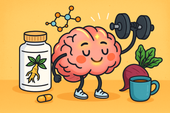
Natural Pre-Workout Supplements for Motivation and Mental Sharpness
Adaptogens are nature’s stress balancers 🌿 — powerful herbs like Ashwagandha, Rhodiola, and Holy Basil that help your body stay calm, focused, and resilient. By regulating cortisol and supporting energy balance, they boost motivation, endurance, and emotional stability — naturally. 🌞🧠
-
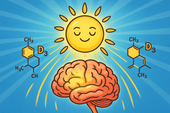
The Role of Vitamin D in Mental Drive and Ambition
Motivation is more than mindset — it’s energy in motion ⚡🧠. It comes from a balance of biology, emotion, and purpose. When your brain, body, and habits align, drive becomes effortless. Learn how to spark consistency, overcome dips, and build unstoppable momentum naturally. 🌿✨
-
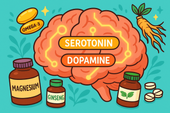
Serotonin, Dopamine, and Motivation: Can Supplements Really Help?
Ginseng is the ultimate vitality root 🌿⚡ — long praised for enhancing focus, energy, and motivation without the crash. By balancing stress hormones, boosting dopamine, and improving brain oxygenation, this adaptogenic powerhouse helps you feel clear, strong, and ready to take action. 🧠✨
-
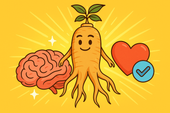
How Ginseng Helps Support Drive, Motivation, and Energy
Ginseng is nature’s endurance root 🌿⚡ — a timeless adaptogen that fuels focus, drive, and resilience from the inside out. By balancing cortisol, boosting dopamine, and supporting mitochondrial energy, ginseng helps you feel clear, strong, and steady — no crash, just sustainable vitality. 🧠✨
-
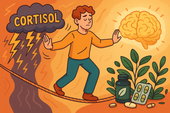
The Stress–Motivation Connection: Supplements That Balance Cortisol
Vitamin D — the “sunshine nutrient” ☀️ — plays a crucial role in mental health, motivation, and energy regulation. Low levels can lead to fatigue, low mood, and sluggish focus. Learn how sunlight, nutrition, and supplementation can restore your inner light and boost emotional balance naturally. 🌿🧠
-
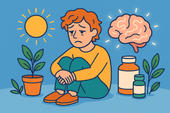
When Low Mood Drains Your Drive: Natural Support Options
Vitamin D is more than the “sunshine vitamin” ☀️ — it’s a key player in mood, motivation, and overall brain health. Low levels can lead to fatigue, low drive, and seasonal sadness. Learn how sunlight, supplements, and nutrition can help restore balance and lift your emotional energy naturally. 🌿🧠
-
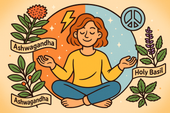
How Adaptogenic Herbs Help You Stay Consistent
Adaptogens are nature’s resilience enhancers 🌿. From Ashwagandha to Rhodiola and Holy Basil, these herbs help your body adapt to stress, balance cortisol, and maintain steady energy. Learn how they build inner stability — keeping your focus, mood, and motivation consistent through life’s ups and downs. ⚡🧘
-

Can Creatine Boost Mental Drive as Well as Physical Performance?
IQ, or intelligence quotient, measures more than problem-solving — it reflects how efficiently your brain processes, adapts, and connects ideas 🧠⚡. While genetics play a role, lifestyle, nutrition, and brain health all influence cognitive performance. Learn how to support mental sharpness and cognitive growth naturally. 🌿✨
-
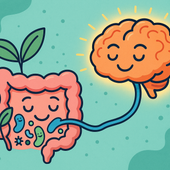
The Link Between Gut Health and Motivation: Probiotics Explained
Serotonin — the “feel-good” neurotransmitter 🌞 — plays a powerful role in mood, motivation, and overall emotional balance. Produced mostly in the gut, it connects digestion, happiness, and focus through the gut-brain axis. Learn how to naturally support serotonin for calmer energy and lasting motivation. 🌿✨
-
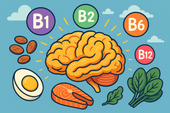
How B Vitamins Fuel Motivation and Energy at the Cellular Level
B vitamins are the body’s natural energy engines ⚡. They convert food into fuel, support dopamine for motivation, and power brain cells at the mitochondrial level. From B1 to B12, these nutrients help you stay focused, resilient, and full of drive — every single day. 🌿🧠
-
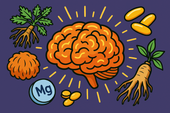
Supplements That Support Mental Endurance for Long Projects
Mindset is more than motivation — it’s the mental framework that shapes how you respond to challenges and pursue goals 🌿🧠. A growth mindset turns obstacles into opportunities, while a fixed mindset fuels self-doubt. Learn the science behind mental resilience and how to cultivate a mindset that sustains focus, creativity, and long-term success. ✨
-
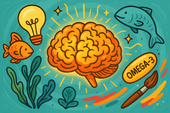
How Omega-3s Influence Drive, Creativity, and Problem-Solving
Sleep isn’t just rest — it’s the foundation of mental clarity, emotional balance, and motivation 🌙💤. During deep sleep, your brain resets stress hormones, consolidates memory, and clears away mental fog. Learn how better sleep supports neuroplasticity, creativity, and lasting energy for your day. 🌿✨
-
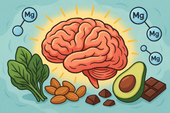
Can Magnesium Improve Your Focus and Motivation?
Caffeine is the world’s favorite stimulant ☕ — boosting alertness, sharpening focus, and lifting motivation within minutes. But there’s real science behind that morning cup. Learn how caffeine works on adenosine and dopamine, how to avoid the crash, and how to use it strategically for sustained energy and mental performance. ⚡🧠
-
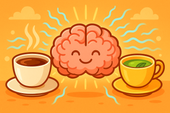
The Role of L-Theanine and Caffeine in Daily Motivation
Cortisol — often called the “stress hormone” — is both your alarm system and your reset button ⚡. It keeps you alert in the morning and helps you recover after challenges, but when it stays high too long, it drains your mood and energy. Learn how to balance cortisol naturally for steady focus, calm, and motivation. 🌿
-
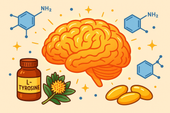
Supplements That Support Dopamine for Drive and Reward
Curcumin — the golden compound in turmeric — is more than a spice 🌿✨. It’s a powerful anti-inflammatory that protects dopamine neurons, supports brain clarity, and enhances mood. Learn how curcumin’s antioxidant properties help stabilize energy, reduce brain fog, and promote emotional resilience naturally. 🌼
-
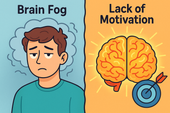
Brain Fog vs Lack of Motivation: What’s Really Holding You Back?
Hormones are the body’s invisible messengers — shaping energy, mood, focus, and motivation 🧠🌿. When they’re balanced, you feel clear, confident, and emotionally steady. Learn how key hormones like cortisol, serotonin, dopamine, and estrogen interact to influence your mental well-being and what you can do to keep them in harmony naturally. ✨
-

Supplements for Staying Collected During Disagreements
Science helps us understand why we feel, react, and change 🌿🧠. From brain chemistry to neurotransmitters and hormones, every emotional response has a biological root. Explore how research in neuroscience and psychology reveals practical ways to stay balanced, focused, and emotionally strong in daily life. 🔬✨
-

Managing Anger While Traveling
Supplements can help calm your nervous system and keep your emotions balanced while on the go 🌿. From magnesium and ashwagandha to L-theanine and omega-3s, learn how natural nutrients support stress resilience, focus, and emotional control — even through long flights, delays, and unpredictable travel days. ✈️
-

How to Keep Your Temper in Online Debates
Supplements can do more than fill nutritional gaps — they can help balance your energy, focus, and stress response naturally 🌿. From adaptogens to amino acids, the right nutrients support your brain chemistry and hormonal harmony for calm, steady productivity. Discover how supplements can build long-term resilience without the crash. ⚡🧠
-

Supplements to Stay Calm Before Public Speaking
Breathwork is one of the simplest yet most powerful tools for calming pre-performance stress 🌬️. By slowing and deepening your breathing, you lower cortisol, steady your heartbeat, and re-center your mind. Learn the science behind how controlled breathing activates your parasympathetic nervous system — helping you speak, perform, or focus with grounded confidence. 🌿
-

How to Handle Customer Service Stress Without Losing Your Cool 💬🧘♀️
Customer service can test even the calmest person’s patience. 😤 Learn how to handle difficult clients and daily pressure without losing your cool — through better mindset management, calming breathwork, and practical communication tools. Stay grounded, protect your energy, and transform stress into strength. 🌿
-
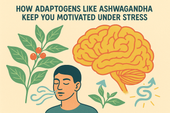
How Adaptogens Like Ashwagandha Keep You Motivated Under Stress
Feeling overwhelmed and unmotivated? 🌿 Discover how adaptogens like Ashwagandha can help you stay centered, focused, and energized under stress. Learn how supplements, breathwork, and therapy work together to restore your natural motivation and help you thrive — even during life’s toughest moments. 💪✨
-
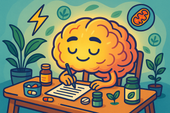
Supplements That Support Long-Term Productivity Without the Crash ⚡🌿
Cortisol — your body’s main stress hormone — can be both your best friend and worst enemy. ⚡ When balanced, it keeps you focused, energized, and ready to act. But when it stays high for too long, it leads to fatigue, anxiety, and emotional crashes. Learn how to regulate cortisol naturally through supplements, sleep, and stress management to maintain calm, steady productivity. 🌿
-
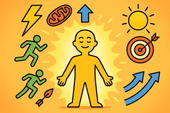
Why Energy Levels and Motivation Go Hand in Hand ⚡🧠
B-vitamins are the brain’s spark plugs 🔋. They turn food into fuel, support neurotransmitter production, and keep your mood, energy, and focus balanced. Learn how vitamins like B6, B9, and B12 work together to power the nervous system, reduce fatigue, and keep motivation high. 🌿
-
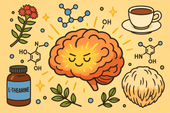
The Science of Motivation: Can Nootropics Help You Stay Focused? 🧠⚡
Nootropics are nature’s tools for sharper thinking and sustainable focus 🧠🌿. From Rhodiola and Lion’s Mane to L-theanine and Bacopa, these brain-boosting compounds enhance motivation, memory, and stress resilience. Learn the science behind how nootropics work — and how to use them safely for peak mental performance and clarity. ⚡
-
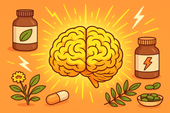
How Natural Supplements Can Boost Your Daily Drive
Cortisol is your body’s main stress hormone — powerful, necessary, but often misunderstood. ⚡ When balanced, it keeps you alert and energized; when chronically elevated, it drains mood, motivation, and focus. Learn how to regulate cortisol naturally through nutrition, supplements, and calming lifestyle habits for steady energy and emotional balance. 🌿
-
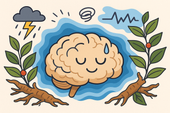
Ashwagandha for Stress and Low Mood
Breathwork is more than a relaxation tool — it’s a way to rewire your nervous system. 🌬️ Through intentional breathing, you can reduce stress hormones, improve focus, and calm emotional turbulence. This guide explores the science of breathwork and its powerful effects on mental clarity, resilience, and emotional regulation. 🌿
-
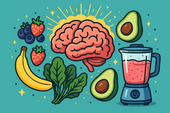
Mood-Boosting Smoothie Recipes
Your blood sugar affects far more than energy — it influences mood, focus, and emotional stability too 🍎. Learn how maintaining balanced glucose levels supports brain health, reduces anxiety, and prevents emotional crashes. Discover the foods and habits that keep your mind calm and your energy steady throughout the day. 🌿
-
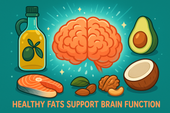
How Healthy Fats Support Brain Function
Your brain thrives on healthy fats 🧠💧. From omega-3s to MCTs, the right fats enhance focus, memory, and mood while protecting against inflammation and aging. This article explores how good fats — like those from olive oil, salmon, avocado, and nuts — build sharper thinking, emotional balance, and lasting brain vitality. 🌿
-
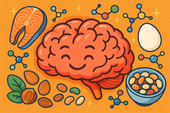
The Role of Protein in Mental Clarity
Protein isn’t just for muscles — it’s for your mind. 🧠 This guide explores how amino acids from high-quality protein fuel neurotransmitters, stabilize mood, and sharpen focus. Learn how balanced protein intake supports dopamine, serotonin, and energy regulation to boost mental clarity and emotional stability naturally. 🍳🌿
-
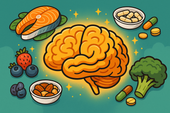
Nutrients That Support Emotional Stability
Your emotions are built from nutrients as much as from thoughts 🌿. This science-backed guide reveals the vitamins, minerals, and healthy fats that stabilize mood and reduce stress — from B-vitamins and magnesium to omega-3s and probiotics. Learn how balanced nutrition supports neurotransmitters, strengthens resilience, and promotes lasting calm and clarity 🧠✨.
-
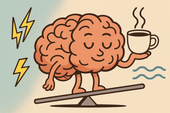
How Caffeine Affects Your Mood ☕
Your morning coffee might lift your spirits — but what’s really happening inside your brain? ☕ This in-depth guide explores how caffeine affects mood, motivation, dopamine, and stress. Learn how to enjoy caffeine mindfully without triggering anxiety, burnout, or emotional crashes. Discover the science behind your energy highs and lows — and how to find calm, sustainable focus. 🌿
-
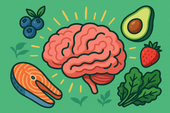
The Best Anti-Inflammatory Diet for Mental Health
Inflammation doesn’t just affect your body — it impacts your mood, focus, and emotional resilience too 🌿. This comprehensive guide reveals how an anti-inflammatory diet can support mental health by reducing neuroinflammation, balancing gut bacteria, and stabilizing blood sugar. Learn which foods to eat (and which to avoid) to protect your brain, boost serotonin, and promote lasting calm. 🧠✨
-

Why Sugar Spikes Can Worsen Depression
Sugar highs can make you feel good for a moment — but what comes next can fuel emotional crashes and deepen depression 🍭. This article explains how blood sugar spikes disrupt brain chemistry, increase inflammation, and destabilize serotonin. Learn how food, supplements, breathwork, and therapy can help you break the sugar–mood cycle and restore lasting emotional balance 🌿.
-
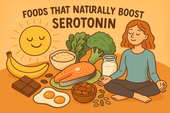
Foods That Naturally Boost Serotonin
Serotonin isn’t just a brain chemical — it’s your body’s built-in mood stabilizer 🌞. This in-depth guide explores how natural foods like salmon, eggs, bananas, and dark chocolate can elevate serotonin levels, while gut health, key nutrients, supplements, breathwork, and therapy create the perfect synergy for calm and emotional balance. Learn how to support your mind through diet, lifestyle, and mindset — naturally. 🌿
-
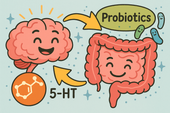
Probiotics for Mood Balance
-
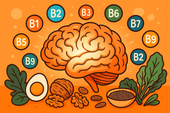
B-Vitamins and Their Role in Mental Health
Methylation is one of your body’s most important biochemical processes — influencing mood, energy, and focus. Powered by B-vitamins like B6, B9, and B12, it helps your brain create serotonin, detox efficiently, and maintain emotional balance. 🌿
-
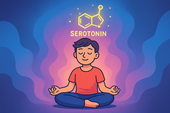
5-HTP for Serotonin Support
Calm isn’t just an emotion — it’s a physiological state where your body and mind finally sync in peace. By slowing your breath, softening your thoughts, and creating safety within, you restore the deep relaxation your nervous system craves. 🌿
-
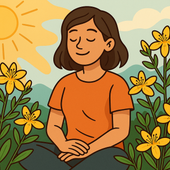
St. John’s Wort for Mild Depression
Antidepressants can be life-changing for many — but understanding how they work and what natural options like St. John’s Wort can complement them is key. Learn how both approaches affect brain chemistry, mood balance, and long-term emotional wellness. 🌿
-
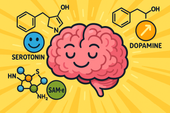
SAM-e: A Natural Mood Booster
Emotional regulation is the art of staying calm and grounded, even when life feels chaotic. By balancing your brain, body, and breath, you can respond with clarity instead of reacting from stress — building real emotional resilience and inner peace. 🌿
-

Rhodiola Rosea for Emotional Resilience
Neuroplasticity is your brain’s ability to grow, adapt, and heal — even after stress or trauma. Every thought, emotion, and habit reshapes your neural pathways, helping you build stronger emotional resilience, sharper focus, and lasting mental balance. 🌿
-
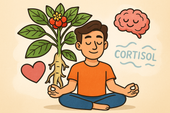
Ashwagandha for Stress and Low Mood
Adaptogens are nature’s stress balancers — powerful herbs like ashwagandha, rhodiola, and reishi that help your body adapt to tension, fatigue, and change. By regulating cortisol and supporting your nervous system, they build calm focus and emotional resilience from the inside out. 🌙
-
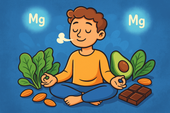
Magnesium’s Role in Emotional Regulation
Neuroscience helps us understand why we feel, think, and react the way we do. From brain chemistry and neural circuits to stress responses and emotional learning, the science of the brain reveals how our minds can heal, grow, and find balance. 🌿
-
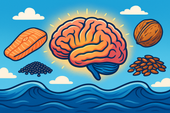
Omega-3 Fatty Acids and Emotional Well-Being
Nutrients aren’t just fuel — they’re communication signals that tell your brain and body how to function. From magnesium and vitamin D to omega-3s and B vitamins, the right mix of nutrients helps calm your mind, balance hormones, and support emotional and physical well-being. 🌙
-
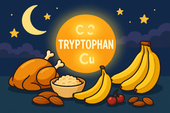
The Role of Tryptophan in Sleep Health
Mental health isn’t just the absence of illness — it’s the foundation of calm, focus, and emotional resilience. From managing stress and anxiety to nurturing self-compassion, understanding your mental well-being is the first step toward a balanced, more peaceful life. 🌿
-

Nutrients That Promote Nighttime Relaxation
Potassium does more than balance fluids — it also helps your body and mind relax at night. By calming nerves, reducing muscle tension, and supporting steady heart rhythm, potassium-rich foods like bananas, sweet potatoes, and coconut water can promote deeper, more restful sleep. 🌙
-

Sleep-Friendly Smoothie Recipes
Melatonin is your body’s natural sleep signal — a hormone that tells your brain when it’s time to rest. Learn how melatonin works, which foods and habits boost its production, and how to use it wisely for deeper, more restorative sleep without dependence. 💤
-
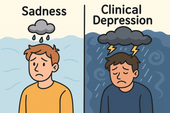
The Difference Between Sadness and Clinical Depression
Your emotions aren’t just in your mind — they’re written in your brain chemistry. Serotonin, dopamine, and GABA work together to regulate mood, motivation, and calm. When they fall out of balance, you may feel anxious, fatigued, or low. Learn how these brain chemicals influence your mental health and what you can do to restore harmony naturally. 🌿
-
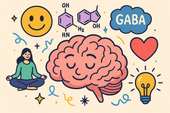
How Brain Chemistry Influences Mood
Your brain is a symphony of neurotransmitters — serotonin, dopamine, GABA, and more — working together to shape how you think and feel. When they’re balanced, you experience calm focus and emotional stability. When they’re not, mood swings and fatigue can follow. Learn how to naturally support these vital messengers for better mood and mental clarity. 🌿
-

How to Fall Asleep in Under 10 Minutes
The military knows a few secrets about falling asleep fast — and they work even in chaos. This article explores the science behind rapid relaxation, including the famous “Military Sleep Method,” which teaches your body to shut down stress and rest on command. Learn how discipline, breath, and focus can help anyone fall asleep in minutes. 🌙


















































